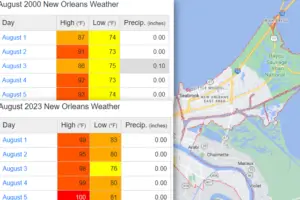The Rise of the Crazy Ants
Louisiana and other Southern states are witnessing an invasion, not by aliens, but by a species of ants known for their erratic movements and swarming populations: the crazy ants. These ants, scientifically called Nylanderia fulva, are different from your typical ants. They don’t form organized trails; instead, they move around seemingly chaotic, earning them their name. Dr. Linda Bui, a Professor of Environmental Sciences at LSU, described their movement as crazy, noting that while they might appear disorganized, they are anything but. Source
The Impact on Louisiana
The crazy ants have been detected in at least 19 parishes across Louisiana, with a significant presence in Plaquemines Parish. While they don’t bite or sting humans like fire ants, their impact on the environment and daily life is profound. They decimate beehives, consume lizards, spiders, and other wildlife, and even cause habitat destruction. Residents have reported invasions in their homes, lawnmowers, and boats. The ants are so pervasive that some locals have preferred the return of fire ants over dealing with these new invaders. Source
Beyond Louisiana: A Southern States Concern
The invasion isn’t limited to Louisiana. Crazy ants have spread to multiple counties in Texas, Florida, Mississippi, and other Southern states. In Texas alone, they are responsible for an estimated $146.5 million in electrical damage annually. The ants are attracted to warmth, leading them to infest electrical circuits and wires, causing short circuits. The invasion has become so severe that residents like Susan and Paul Dans of Baytown, Texas, have had to resort to regular chemical treatments, costing thousands of dollars annually, to keep the ants at bay. The broader concern is the disruption of the Southern ecosystem, as the ants displace other species, including the once-dominant fire ants. Source
The crazy ant invasion is a stark reminder of the delicate balance of our ecosystems. As researchers scramble to find practical solutions, residents are left grappling with the daily challenges posed by these tiny invaders. The situation underscores the need for vigilance, research, and community collaboration to address such ecological threats.

Levon Brown is a seasoned journalist and a vibrant voice in the world of news and current affairs. With over 15 years of experience in the field, Levon has honed a reputation for delivering sharp, insightful, and balanced reporting. He brings an analytical approach to complex issues, and his nuanced understanding of socioeconomic dynamics allows him to illuminate topics that often go underreported.






